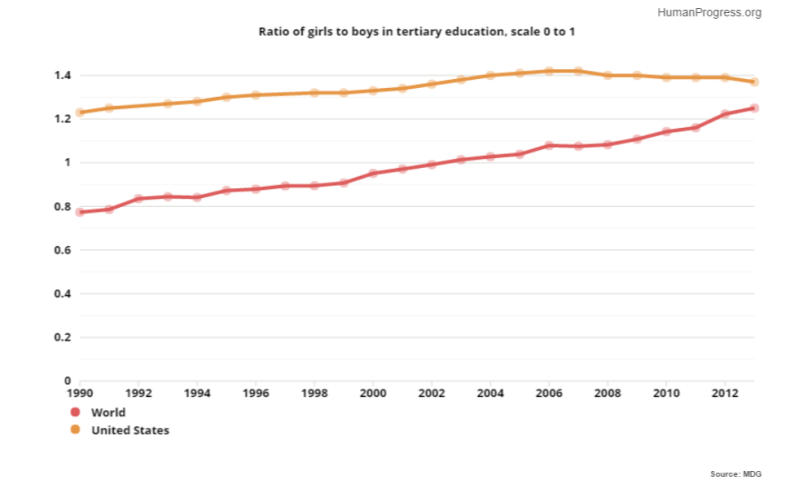In honour of a woman’s placement on the U.S. twenty dollar bill, here are exactly twenty graphs exploring the remarkable progress that women have made over the last few decades.
1. Around the word, more girls complete primary and secondary school.

2. Related to that fact, more girls are literate, and the gender literacy gap is closing.

3. There are now actually more women than men pursuing tertiary education.

4. Women are less likely to die in childbirth. Consider the maternal mortality rate in Africa, progressing steadily.

5. Contributing to that trend, more pregnant women in Africa receive prenatal care and more births are attended by skilled health staff.

6. Not only are mothers safer, but so are their children. Girls are less likely to die before their fifth birthday, contributing to rising average life expectancy among women.

7. The end of communist experiments, like the Great Leap Forward, has contributed to the trend of women living longer.

8. Thanks to a growing food supply, fewer girls under five suffer from hunger and are underweight.

9. Women’s suicide rates are falling in many wealthy countries. Consider the United Kingdom, for example.

10. Far fewer women die from cancer in rich countries, including breast cancer. Consider the United States.

11. In the United States, domestic violence against women plagues fewer households than in the 1990s.

12. The most heinous kind of domestic violence, the murder of an intimate partner, has also become rarer for both female and male victims.

13. U.S. police recorded fourteen thousand fewer rapes in 2013 than in 2003, despite population growth.

14. In fact, both rapes and sexual assaults against women have become rarer in the United States.

15. Some sexist attitudes about violence towards women are also on the decline.

16. Women have a greater presence in the world’s parliaments and in ministerial level positions.

17. There are more women inventors than before, although they’re still a minority.

18. There are also far more female professors in the world’s universities.

19. The ratio of women to men in the labour force is approaching parity.

20. The gender wage gap, largely the result of divergent career preferences between the genders rather than sexist employers, is narrowing in rich countries.


